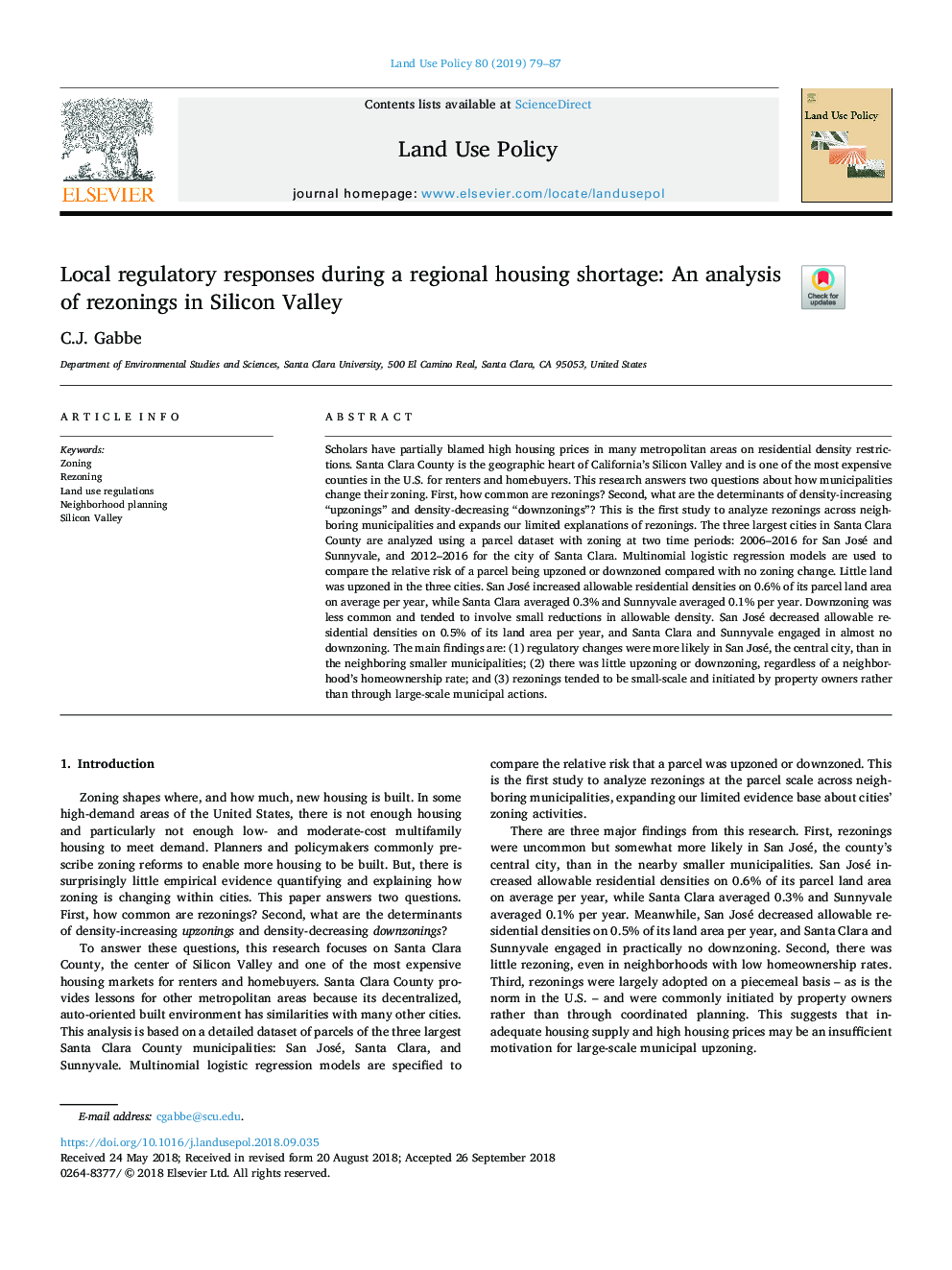| Article ID | Journal | Published Year | Pages | File Type |
|---|---|---|---|---|
| 11012804 | Land Use Policy | 2019 | 9 Pages |
Abstract
Scholars have partially blamed high housing prices in many metropolitan areas on residential density restrictions. Santa Clara County is the geographic heart of California's Silicon Valley and is one of the most expensive counties in the U.S. for renters and homebuyers. This research answers two questions about how municipalities change their zoning. First, how common are rezonings? Second, what are the determinants of density-increasing “upzonings” and density-decreasing “downzonings”? This is the first study to analyze rezonings across neighboring municipalities and expands our limited explanations of rezonings. The three largest cities in Santa Clara County are analyzed using a parcel dataset with zoning at two time periods: 2006-2016 for San José and Sunnyvale, and 2012-2016 for the city of Santa Clara. Multinomial logistic regression models are used to compare the relative risk of a parcel being upzoned or downzoned compared with no zoning change. Little land was upzoned in the three cities. San José increased allowable residential densities on 0.6% of its parcel land area on average per year, while Santa Clara averaged 0.3% and Sunnyvale averaged 0.1% per year. Downzoning was less common and tended to involve small reductions in allowable density. San José decreased allowable residential densities on 0.5% of its land area per year, and Santa Clara and Sunnyvale engaged in almost no downzoning. The main findings are: (1) regulatory changes were more likely in San José, the central city, than in the neighboring smaller municipalities; (2) there was little upzoning or downzoning, regardless of a neighborhood's homeownership rate; and (3) rezonings tended to be small-scale and initiated by property owners rather than through large-scale municipal actions.
Related Topics
Life Sciences
Agricultural and Biological Sciences
Forestry
Authors
C.J. Gabbe,
